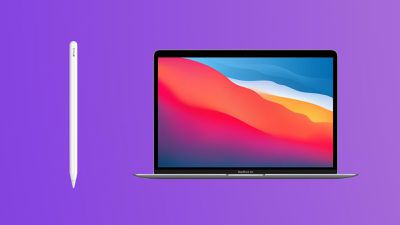Since Apple’s event, there has been lots of talk about the new MacBook Pros, especially among the Apple commentariat. It’s fair to say that the backlash against these new devices is stronger than for any MacBook announcement I can remember, and it’s mostly coming from two particular sets of people: Those who use heavy-duty creative applications such as Photoshop, and those who develop for Apple platforms.
This is easily Apple’s most vocal audience, so such a response must be at least a little disheartening. But it’s also worth remembering that Apple — and even the Mac in isolation — has long since gone mainstream, and is bigger than these groups. Apple’s challenge now isn’t serving this hardcore base but pleasing the much larger mainstream Mac user base without alienating the power users.
Apple’s increasingly diverse base
I wrote a post a while back about the counterintuitive liability Apple has in its growing customer base. On the one hand, this customer base is a huge asset, especially given the upgrade cycles for devices like the iPhone and the ability to sell services to a captive group of users. But on the other hand, the increasing diversity of this base can also be a liability, because Apple now has to please many groups in a much less homogeneous base than in the past. The problem is the public image of Apple among many in the media and beyond continues to be of a company that serves mostly creative professionals. This perception has led to a lot of misguided commentary over the past week, both about the damage Microsoft’s Surface Studio could do to Apple’s Mac base, and about the perceived shortcomings of the new MacBook Pro line.
Apple’s Mac base today
The reality is that Apple’s installed base of Macs today is likely around 90 million. That’s up enormously over the last 15 years or so — it was around 25 million in the early 2000s. As that base has grown, it has diversified considerably. Just visit any college campus to see row on row of MacBooks in lecture rooms and study halls. These aren’t creative professionals, and they’re not even using their MacBooks for particularly resource-intensive tasks. But, of course, there are still creative professionals and Apple developers who use Macs for work. So it’s worth thinking about what percentage of the overall base these users might represent.
Here are some data points:
- In 2013, Adobe estimated it had an installed base of around 12.8 million users of its Creative Suite software, with another 250,000 on Creative Cloud. Around 40 percent of this revenue came from what Adobe described as creative professionals, with another 25 percent coming from other creative people in businesses, 10 percent from creative people using it at home and 25 percent from education.
- Adobe currently has around eight million Creative Cloud subscribers (this is how Adobe now sells its creative suite, including Photoshop, Illustrator, Premiere, and so on).
- At WWDC this year, Tim Cook announced that Apple had 13 million registered developers.
If we put these numbers together, we get a picture of eight million to 13 million users of Adobe’s creative products and another 13 million or so Apple developers. Of course, of those Adobe users, a good chunk will be using Windows versions rather than Mac versions. At the absolute outside, though, it gives, at most, around 25 million total users in the two buckets that have been most vocal about the MacBook Pro changes, out of a total base of around 90 million, or around 28 percent. Realistically, that number is probably quite a bit smaller, perhaps around 15 percent to 20 percent of the total. Of these, not all will share the concerns of those who have been so outspoken in the past week. To look at it another way, Apple sold 18.5 million Macs in the past year, which might end up being roughly the same as the combined number of creative professionals and developers in the base.
In the end, the picture that emerges is of a base of Macs with the kinds of users that have been expressing concerns or frustration with the changes in the minority. The vast majority of the user base is in other categories, principally general-purpose consumer and business users. How does the rest of the base feel about the new MacBooks? Well, of course, that base is much less vocal and less visible — the general-purpose Mac user tends not to blog or host podcasts about Apple. They’re much more likely to quietly keep using the products they have and occasionally upgrade to something new. The best place to look for their feedback is sales numbers for the Mac. Those have been down a little lately, as the existing Macs have been getting a little long in the tooth, and those in the know have been waiting for upgraded machines.
However, Phil Schiller said last week that online orders for the new MacBooks were higher than they’ve ever been for a new product before, suggesting that some of this pent-up demand is being released now. Mainstream users — and likely quite a few from among the professional class of MacBook users, too — are buying this new product despite the misgivings some power users have. We won’t know the actual numbers on how these MacBook Pros are selling until at least three months from now — and probably longer. But my guess is that those sales numbers will suggest that the mainstream base cares a lot less about some of the subjects of the criticism from the past week and a lot more about a decent bunch of spec upgrades, thinner and lighter hardware, and some interesting new features.
Keeping the pro base happy
Of course, Apple can’t simply ignore the professional base — though these users may be a minority among the overall set of Mac customers, they are an important segment and, as we’ve already seen, a vocal one. Pleasing them is important in its own right, but also as a way to influence broader perceptions of the Mac and Apple as a company.
Apple likely needs to do more here to mollify this base. For starters, it needs to update the desktop Macs, especially the Mac Pro, quickly. The current version of the Mac Pro suffers from being less upgradeable than its predecessor. With that being the case, it requires hardware refreshes more — not less — frequently. It might also be a reasonable concession to the complaints from this base to make it more upgradeable. I suspect Apple will have to think hard about how to please those who want a portable yet ultrapowerful machine, which is really the even narrower segment that has been criticizing the new MacBooks. The portability/power tradeoff it has made in the new machines seems to be fine for the mainstream, but that’s the one thing that seems to be creating the most problems for the hardcore base, and it’s worth addressing.
[Source:-Recode]





